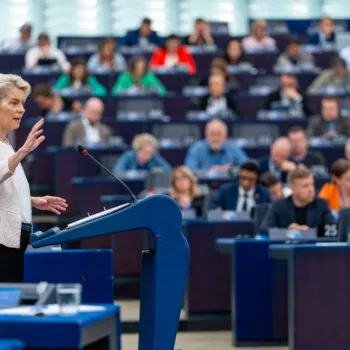*This paper has been updated since it was first released to reflect feedback we received.*
China will out-invest the EU over the next decade in critical clean energy infrastructure and technology, says a new report from E3G.
China’s next Five-Year-Plan aims to make their companies leaders in low carbon technologies by rapidly expanding domestic clean energy markets. This represents a huge market opportunities and clear risks to current EU market leaders in renewables, grids and information technology.” says Nick Mabey, CEO of E3G, a non-profit environmental organisation operating in Europe, China and the US.
E3G’s report, “Chinese challenge or low carbon opportunity? The implications of China’s 12th Five-Year-Plan for Europe” identifies the differences in approach between Europe and China which are key in the race to maintaining economic competitiveness in a low-carbon world.
China has begun to seriously organise itself to be competitive in the low carbon race. It is moving from setting administrative targets to building new markets. While China is learning lessons from Europe, European policy in this area is becoming more fragmented and ineffective” he added.
The Five-Year-Plan is built around the commercial benefits of setting challenging energy efficiency and climate change targets and providing sufficient finance to ensure that they are delivered. At the same time, draft decisions planned for the European Council on 4th February show that Europe’s climate and energy policy still lacks targets and the financial support to drive innovation, growth and seriously reduce the risk of high inflation that haunts its economic prosperity.
China is about to commit serious money into a low carbon future. Europe has to do the same to stay in competitive but critical parts of Europe’s low carbon innovation agenda remain unfunded.” says Mabey. “Europe must move to a high-quality investment-friendly 30 percent greenhouse gas target which stimulates growth in domestic EU markets. Energy saving targets and mechanisms must be at the heart of avoiding inflationary pressures from fossil fuel energy imports that could grind our economies into the ground”.
Draft European Council decisions for February 4th fail to set binding energy efficiency goals which would provide vital domestic growth opportunities. They also do not identify the financial support needed to deliver the EU’s stated objectives on grid infrastructure or innovation (through the Strategic Energy Technology Plan). This will undermine the ability of current EU market leaders in low-carbon technologies to remain competitive in the face of aggressive Chinese competition. In contrast, the upcoming Chinese Five-Year-Plan is likely to include:
- A 64 percent increase in installed renewable energy capacity to 427GW compared to the 322GW planned in the EU by 2015.
- Innovative ‘low carbon zones’ will be established to 8 cities and 5 provinces covering 300 million people. These will be real-life, large-scale experiments in designing low carbon regulatory, trade, economic and investment policies of what the future will look like. Discussion on Europe’s ‘Smart Cities’ has yet to start.
- €460 billion investment in ‘smart grids’ by 2020 compared to EU requirements of €23-28 billion which do not yet have identified finance.
- €57 billion on 40,000 km ultra high-voltage (UHV) electricity lines commonly known as ‘supergrids’ by 2015. The EU financing model for an equivalent €100 billion supergrid has yet to be agreed.
- €11.5 billion will be invested in the alternative car market coupled with a sales target of 1 million units of alternative cars by 2015.
The EU has a chance to make a strong link between an economic stimulus driven by a move to a 30 percent greenhouse gas emissions reduction target by 2020 and clearly earmarking climate finance into energy and low carbon solutions. The Chinese 12th Five-Year Plan will be formally released in March 2011. The E3G analysis is based on draft decisions and extensive analysis of media reports. Though some details may change the main elements of the package reported here are unlikely to change.



